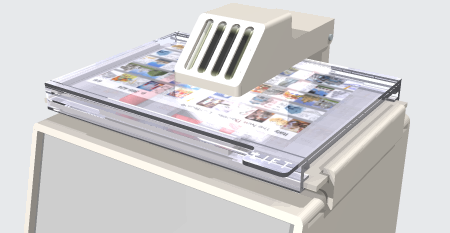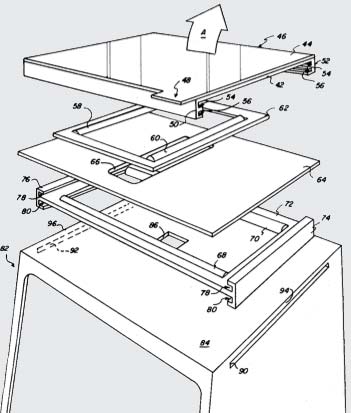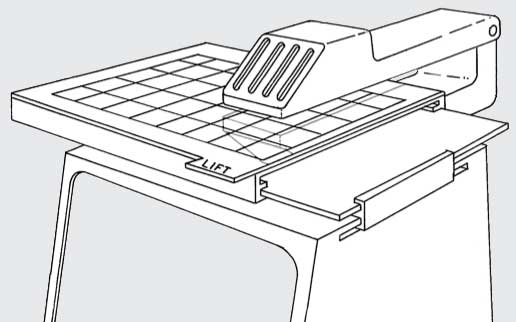Kodak Microfiche-Positioning Mechanism
Kodak Microfiche-Positioning Mechanism
One problem with conventional microfiche viewers in 1979 was the difficulty of precisely positioning the image on the screen, without the “stiction” that caused the fiche to stop early or overshoot.

The user lifts the cover glass to insert the microfiche.
|
The entire mechanism is very compact and self contained because the rollers move only half as far as the microfiche, always staying within the dimensions of the microfiche. The frame 74 hovers around the guides and rollers to keep the assembly together. |
Due to the almost-zero rolling friction, the fiche holder can be moved with the resistance of pushing a cork floating on water.
The lamphouse hovers slightly above the moving fiche frame so that there is no friction drag.



